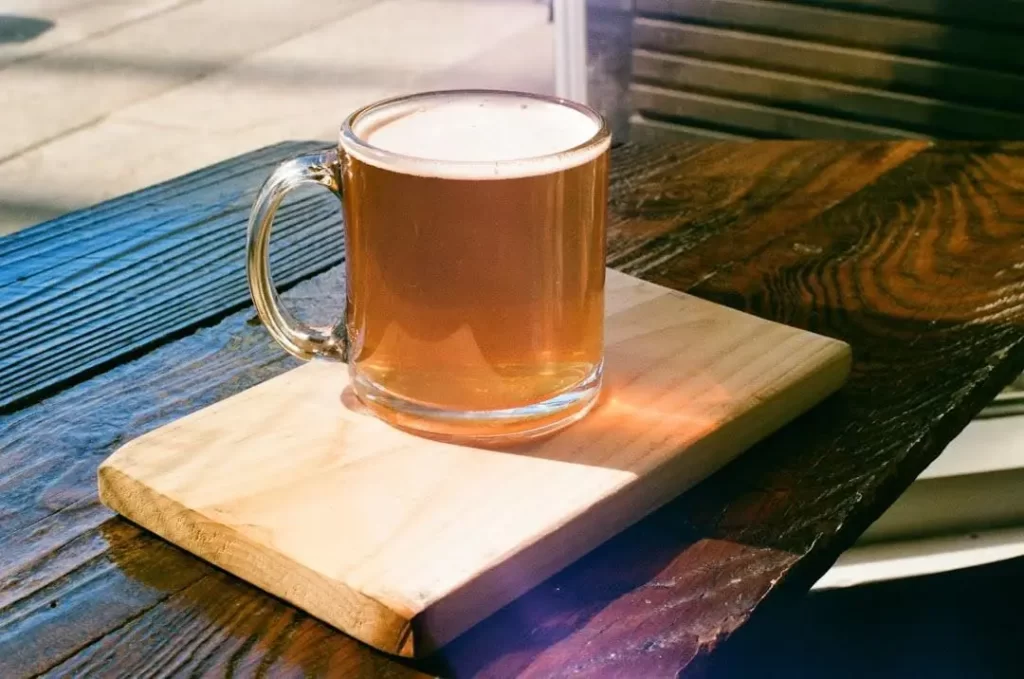Globally, many popular beers are Pilsners. The U.S. has Budweiser, Germany has Warsteiner Premium Verum, France has Fischer Tradition Pils, Japan has Asahi, Australia has Carlton Draught, and the list goes on.
However, the average beer drinker may not realize that while every Pilsner is a lager, not every lager is a Pilsner. This is because there are two primary craft beer categories: lagers and ales.
So, why is it important to understand the difference between lager vs. Pilsner? Knowing which lagers are Pilsners and which aren’t will help you choose your preferred beer when ordering at your local brewery. And if you’re a beer hobbyist, it’ll increase your knowledge base about all things beer.
This post explores three key differences between lagers and Pilsners: flavor profiles, brewing methods, and alcohol content. Whether you’re looking to order more confidently or tapping into a new brewing hobby, it’s helpful to start with the basics.
What Are Lager Beers?
Lagers are a highly carbonated type of beer with subtle hop flavors, so they are often associated with consistent carbonation that lasts until the end. They usually have 4.5% to 13% alcohol by volume (ABV) and are low on the bitterness scale at around 4-45 International Bitterness Units (IBU).
There are two main types of lagers: dark lagers and pale lagers (amber lagers fall into the dark category). These two categories may surprise beer drinkers who have only seen pale, golden lagers, but it’s not necessarily a golden color that defines a lager.
There are several other types of lagers besides Pilsners, including:
- Bocks: Strong, dark beer
- Dunkels: Dark brown and smooth beer
- Helles: Bright gold and light-tasting beer
- Märzens: Full-bodied, low-bitterness beer
- Vienna: Austrian sweet lager with a bready, malty taste, more often brewed as craft beer than a general consumption brew
So, if color doesn’t entirely define a lager, what does? The type of yeast used during fermentation is critical.
Lager yeast is best conditioned at low temperatures. This yeast settles to the bottom, which is why it’s known as “bottom-fermenting yeast.” It takes longer to ferment because it’s conditioned at cold temperatures (35-55 degrees Fahrenheit). Lagers take their name from the fermentation process when the beer goes through a lagering stage for maturation. The word “lager” in German means warehouse or repository, so the beer’s name is a nod to the storage process of brewing. This 16-week (on average) lagering stage is what gives lagers their clear color and crisp flavor.
What Are Pilsner Beers?
Pilsners are arguably the most popular lagers. Pilsners are originally from Plzeň, Czech Republic, and have a variety of alternative names, including “Pils” and “Pilsener.”
Saaz hops give Pilsner beers a spiciness that’s balanced with a floral flavor and maltiness. This particular flavor profile became popular in Germany before spreading to other regions, resulting in the Heinekens, Stellas, and Budweisers we know today.
Four types of popular Pilsner beers evolved from different regions:
- Czech Pilsner: The original Pilsner is a Czech-style beer with a flavor resembling sweetened bread. You can also find this style of Pilsner under the label “Bohemian Pilsner,” as part of the Czech region was previously referred to as Bohemia.
- German Pilsner: German-style Pilsner beers are more bitter and not as light as their American counterparts, with flavors that fall comfortably between subtle and dark, hoppy beer.
- Belgian Pilsner: Belgian brewers have a variety of prominent Pilsners that are light, smooth, and ideal for drinking casually on any occasion.
- American Pilsner: American brewers have brought down the intensity of Pilsner flavor notes to create a sweet, bready, and malty beer that’s more subtle than its Czech predecessor.
When it comes to lagers and Pilsners, you may wonder if it’s challenging to tell which is which. That’s why we’re exploring the three key differences to look for when choosing your next beer.
Lager vs. Pilsner: 3 Key Differences
Expanding your knowledge about the differences between lagers vs. Pilsners will help you hone in on your personal preferences and make ordering your next beer easier.
Here’s what to look out for:
1. Flavor Profile and Beer Color
The flavor and color of lagers can vary significantly depending on the type. So, while you might identify that two beers are both different types of lagers, you’ll know you have a Pilsner when the beer is a light color — bright yellow, never dark — and more smooth and malty than similarly-colored beers like Indian Pale Ales (IPAs).
2. Fermentation Process and Hops
Yes, all lagers use bottom-fermenting yeast strains and go through a lagering process. However, Pilseners also have a unique ingredient list and fermentation process than other lagers.
Pilsner brewers create a distinct flavor profile using pale malt and Saaz hops, resulting in a spicy but refreshing and balanced flavor. You can typically identify a Pilsner by its light, bright taste, consistent carbonation, and, of course, the alcohol content.
3. Alcohol Content
Another reason why Pilsners are so in demand is their alcohol content, which is usually around 4.5% to 5.5%, making them lighter compared to many other beers. This allows people to consume higher quantities without becoming too inebriated.
Find the Most Popular Beer Styles at Little Miami Brewing
Exploring differences in brewing styles, fermentation methods, and flavor profiles makes it clear why beer is so popular for casual drinkers and home brewers alike.
If you’re looking for a brewpub with plenty of lagers and Pilsners to choose from, Cincinnati has you covered. Regardless of which variety of beer you prefer, Little Miami Brewing Company is one of Cincinnati’s top breweries, serving brews for any palate.
Our selection of handcrafted beers offers a wide array of choices — from familiar flavors to brand-new favorites. Take a peek at our menu and learn more about us to get started on your craft beer Cincinnati wish list.




